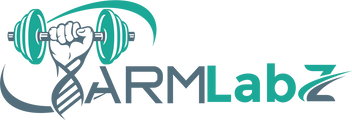Why One Arm is Bigger Than the Other (And How to Fix It)
Written by Inês,
Have you ever looked in the mirror and wondered why one arm just doesn’t seem to measure up to the other? I had that moment when my mom casually pointed out that my right shoulder was a bit lower than my left. Suddenly, this subtle difference became impossible to ignore, and I started asking myself—am I just naturally asymmetrical, or is something off? If this sounds familiar, you’re not alone. While slight differences are normal, noticeable imbalances can affect your performance and confidence. Let’s dive into what causes uneven arms and how you can fix them with smarter, more controlled training.
Why Are My Arms Uneven?
Our bodies are full of little quirks, and uneven arms are no exception. Several factors can contribute to these imbalances:
Arm Dominance and Daily Habits
We all have a dominant arm that naturally takes the lead in our daily activities—whether it’s texting, carrying groceries, or opening jars. Over time, these basic movements mean one arm gets more regular use, gradually developing different strength or muscle tone than its counterpart. It’s the little things you do every day that add up and create noticeable differences.
Uneven Workouts and Training Mistakes
Even with a balanced workout routine, subtle shifts in technique can cause one arm to assume a greater share of the work. Whether it’s during pull-ups, dumbbell curls, or overhead presses, a slight deviation in form can make a big difference over time.
Injury and Compensation
Injuries can also lead to uneven development. When one arm is injured, it’s natural to lean on the other side to avoid discomfort. However, if proper care isn’t taken during recovery, this compensation can create a lasting imbalance—even after the injury has healed.
How to Correct Muscle Imbalances
The secret to balancing your arms lies in refining your technique and focusing on controlled, deliberate movements. Here are some strategies to help ensure both arms are working in harmony:
Set the Tempo with Your Non-Dominant Hand
When performing unilateral exercises like dumbbell curls, Single-Arm Lat Pulldowns, or Single-Arm Dumbbell Shoulder Presses, always start with your non-dominant hand and let it dictate the tempo. Move slowly and deliberately, focusing on form and full muscle activation. Then, when you switch to your dominant hand, match the exact same tempo and control. This ensures that your stronger arm doesn’t overpower the movement and reinforces balanced engagement between both sides.
Focus on Unilateral Exercises with Controlled Tempo
In addition to setting the pace with your non-dominant hand, prioritizing unilateral exercises allows each arm to work independently, preventing your stronger side from compensating. When training both arms separately, your focus should be on executing each rep with precision rather than rushing through movements. This small adjustment leads to noticeable improvements in symmetry over time.
Use the Forearm Roller 2.0 for Targeted Forearm Training
One of the best ways to isolate and strengthen each forearm is with the Forearm Roller 2.0. This tool makes it easy to focus on one forearm at a time while ensuring you’re engaging both sides equally. Since grip strength plays a crucial role in overall arm development, using the Forearm Roller 2.0 with controlled, intentional movements helps create balanced strength across both arms.
Final Thoughts
Balancing your arms isn’t just about aesthetics, it’s about building functional strength that improves performance and reduces injury risk. By setting the tempo with your non-dominant side, focusing on controlled, deliberate movements, and incorporating tools like the Forearm Roller 2.0, you can gradually correct imbalances and develop even, powerful arms.

